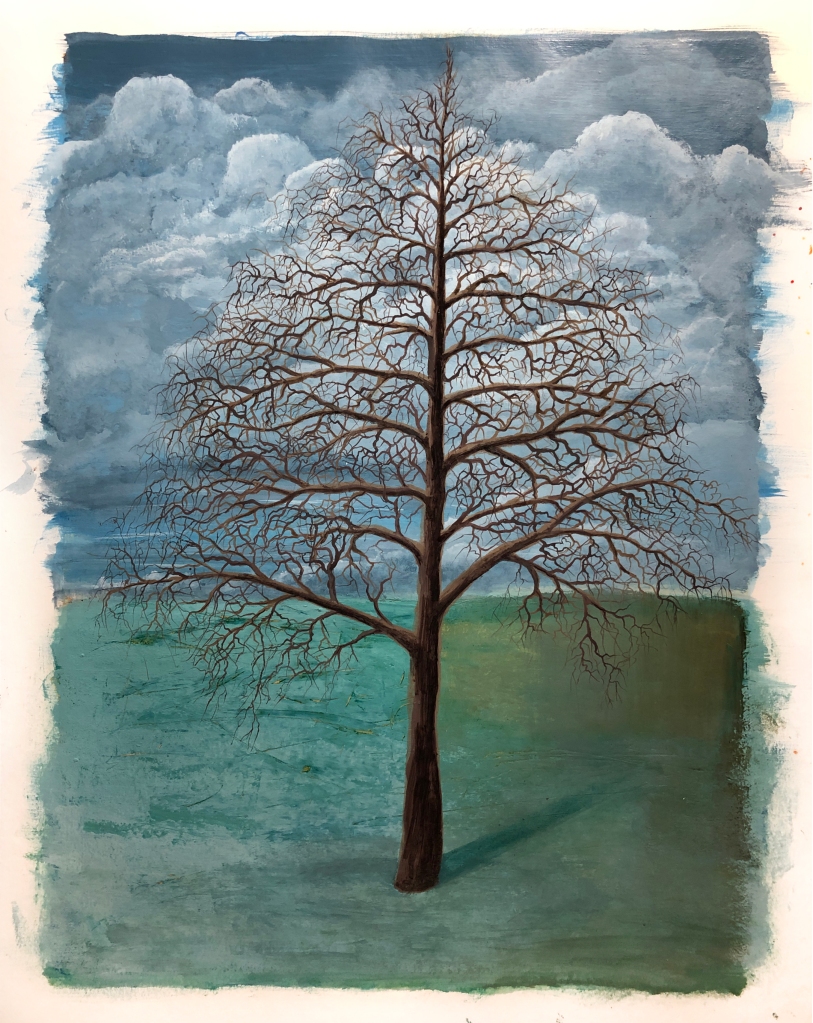
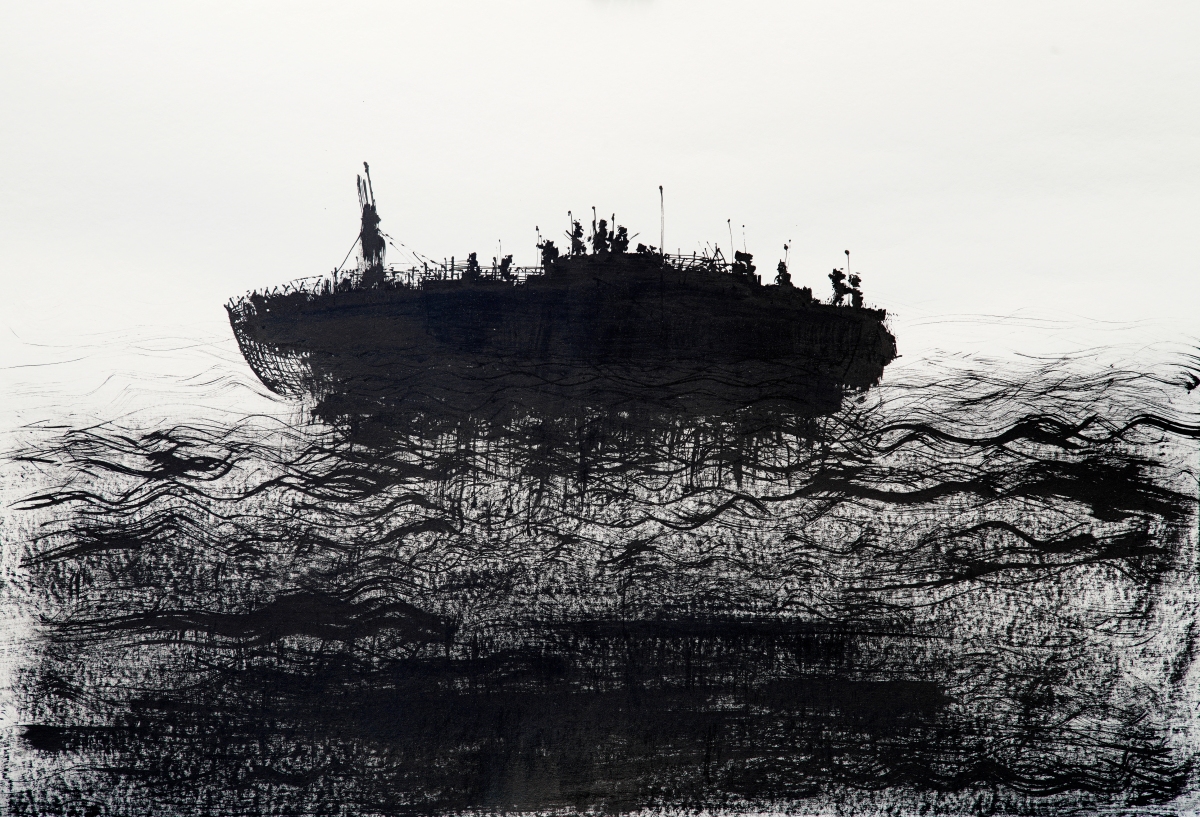


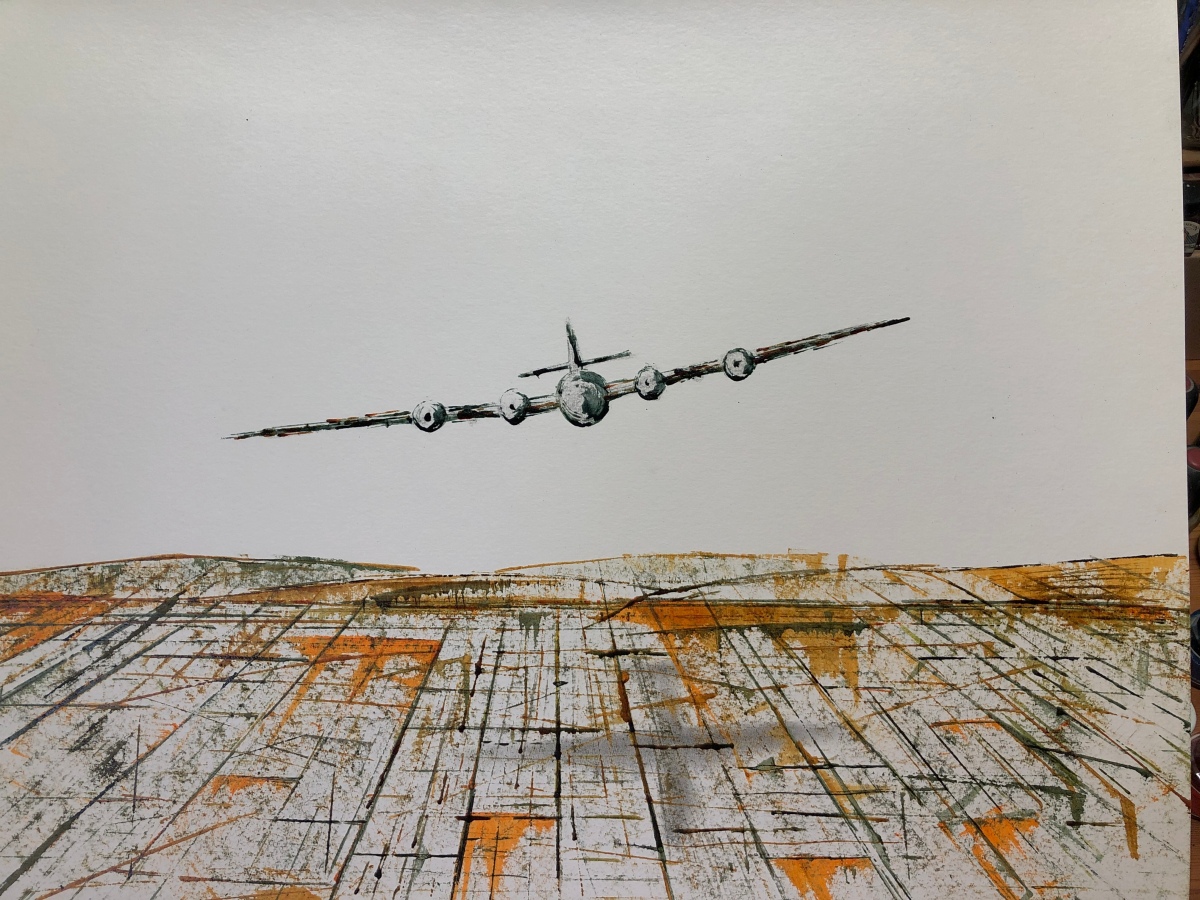

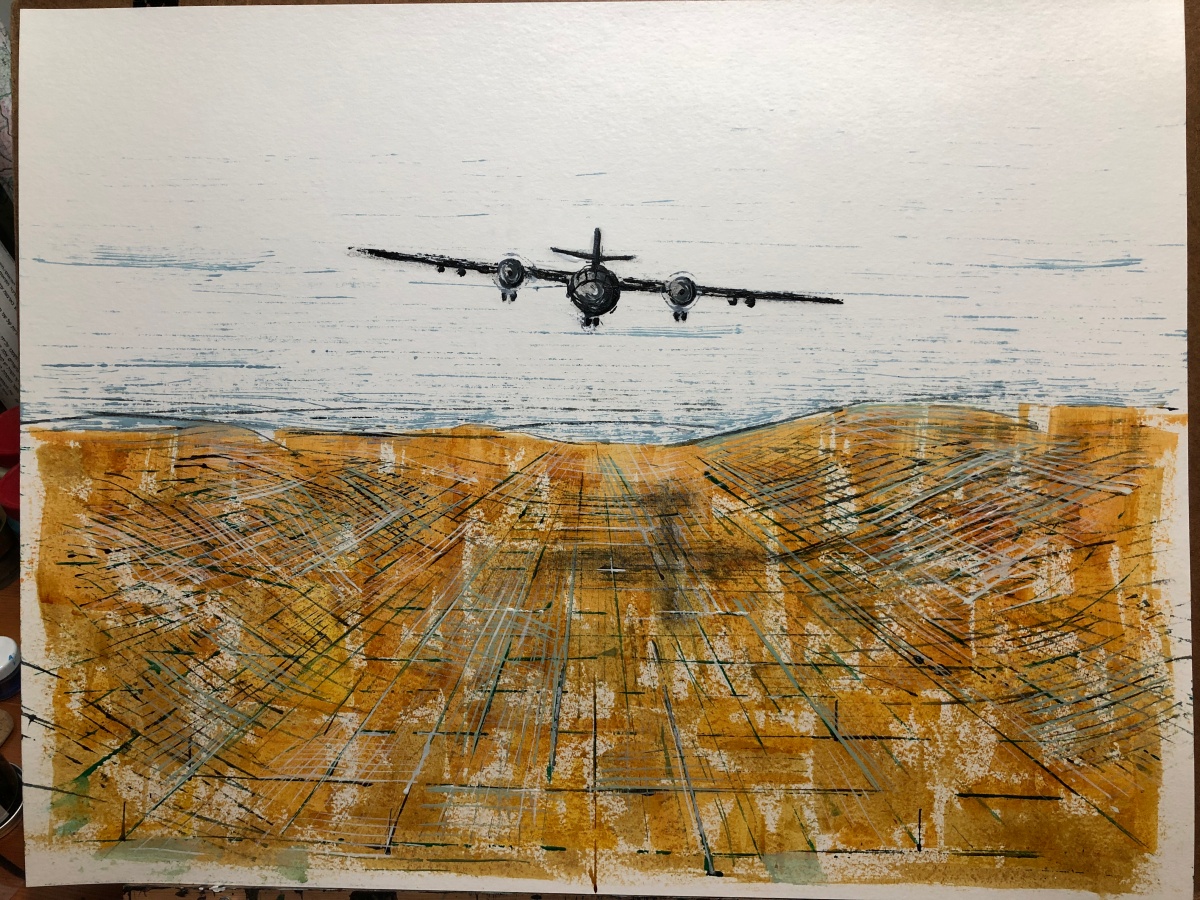







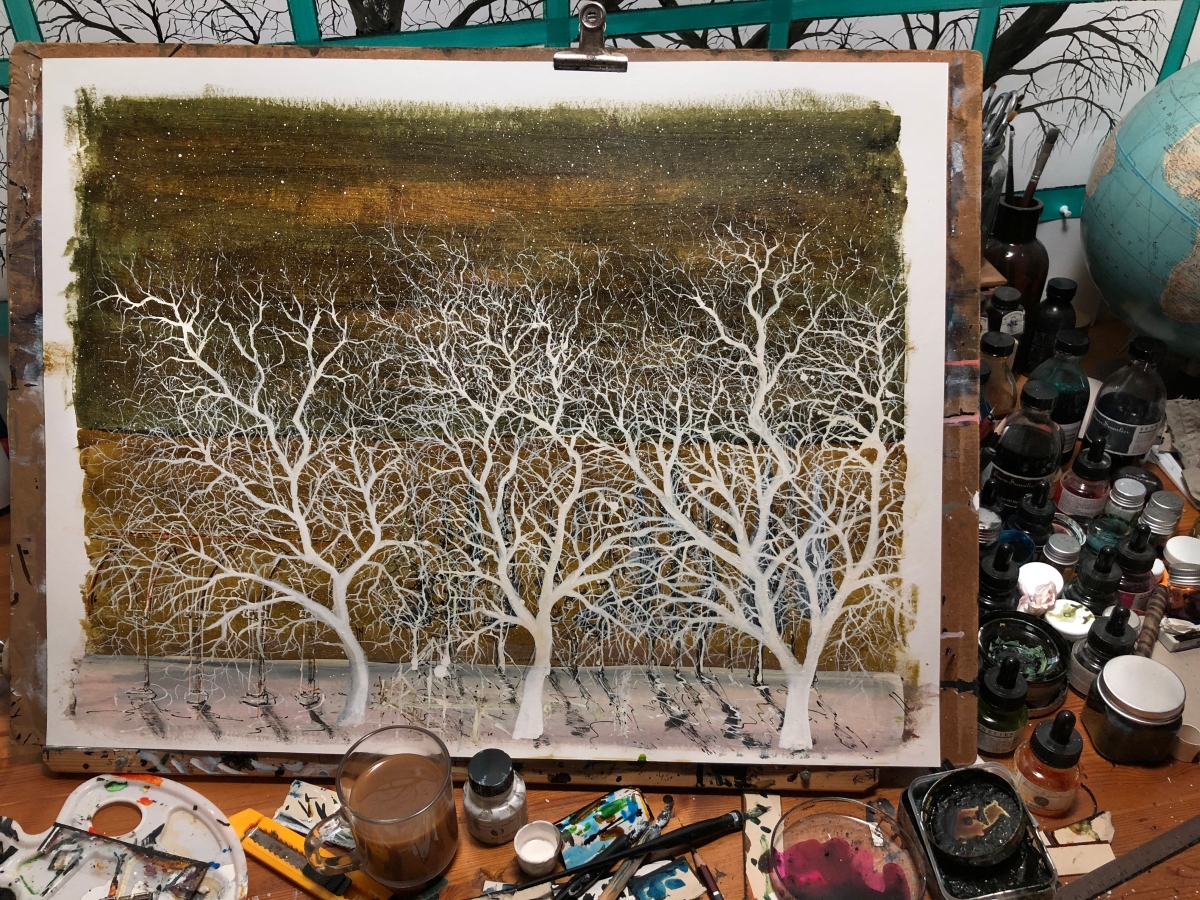
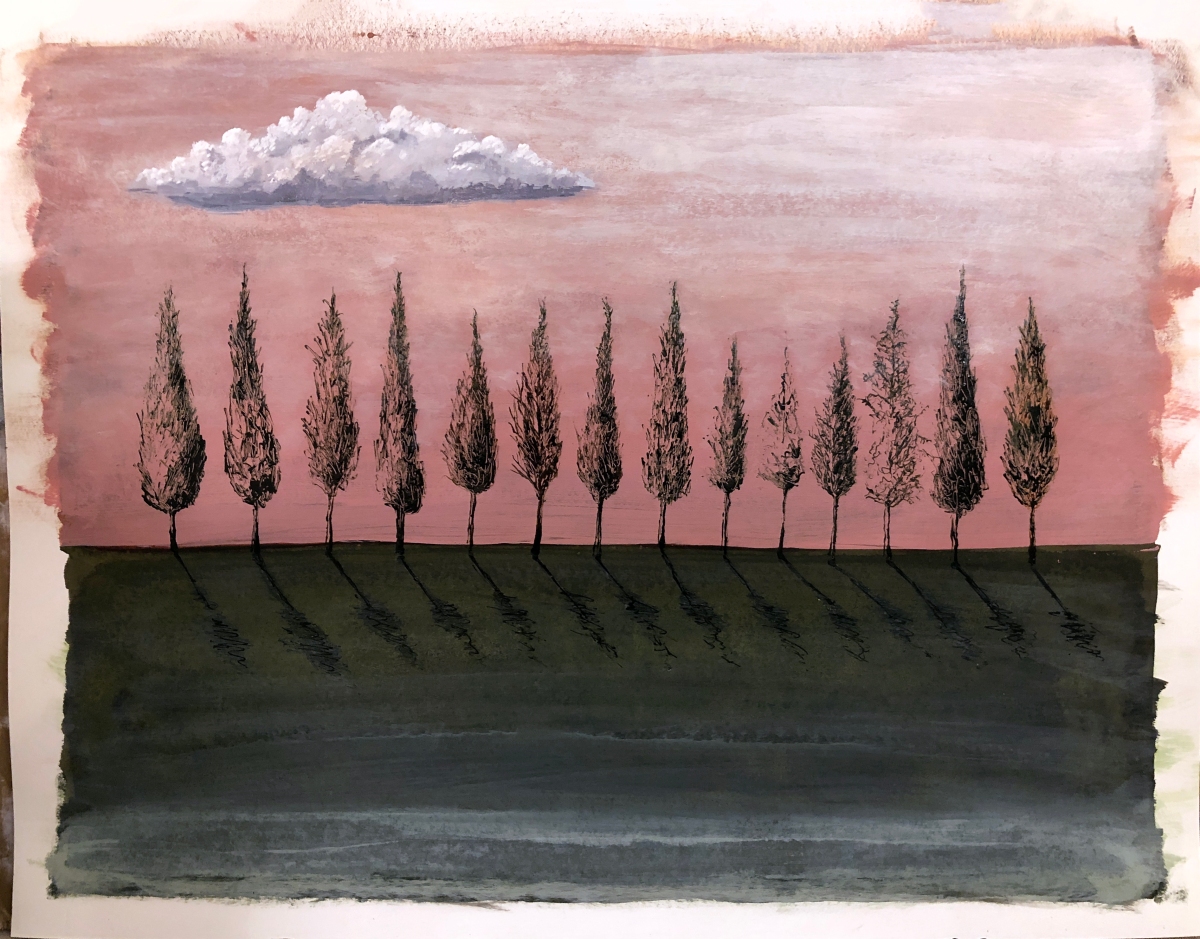




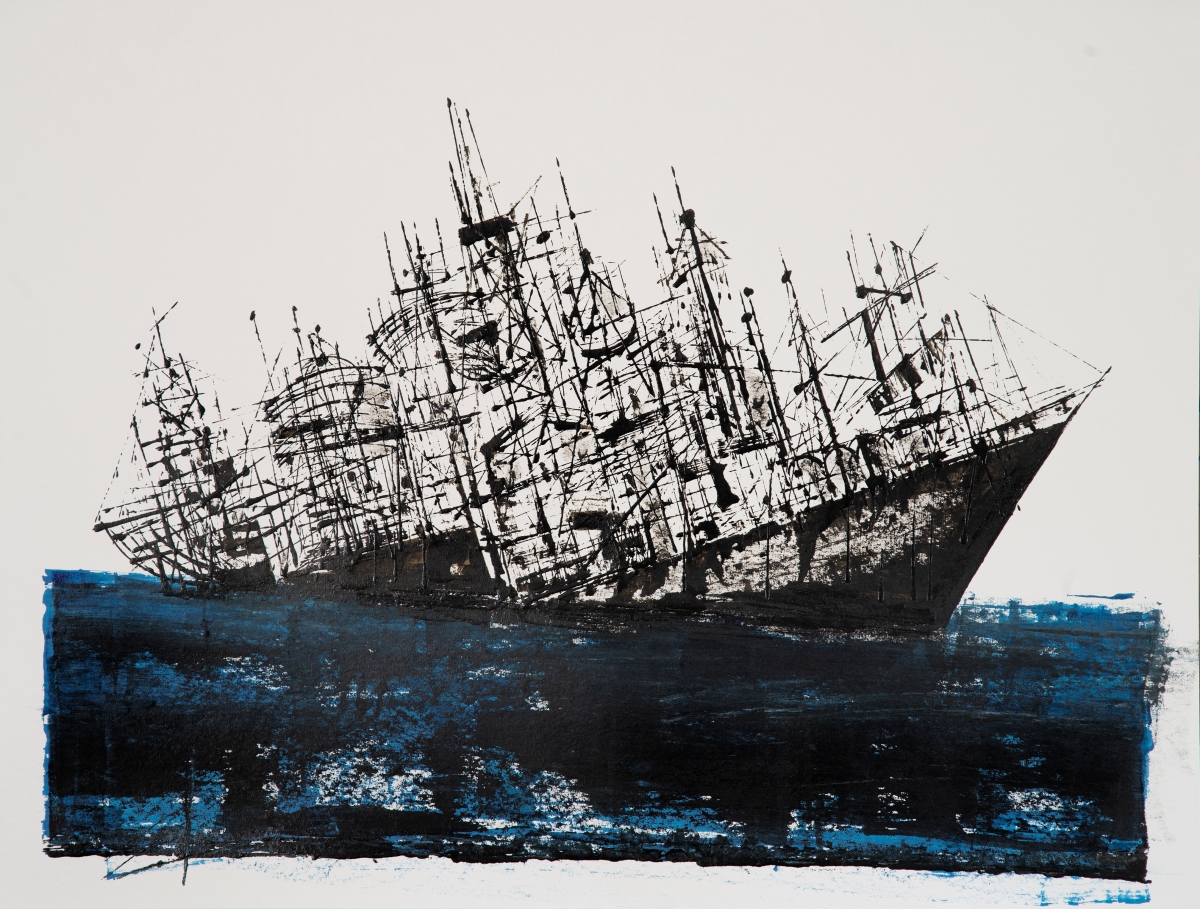


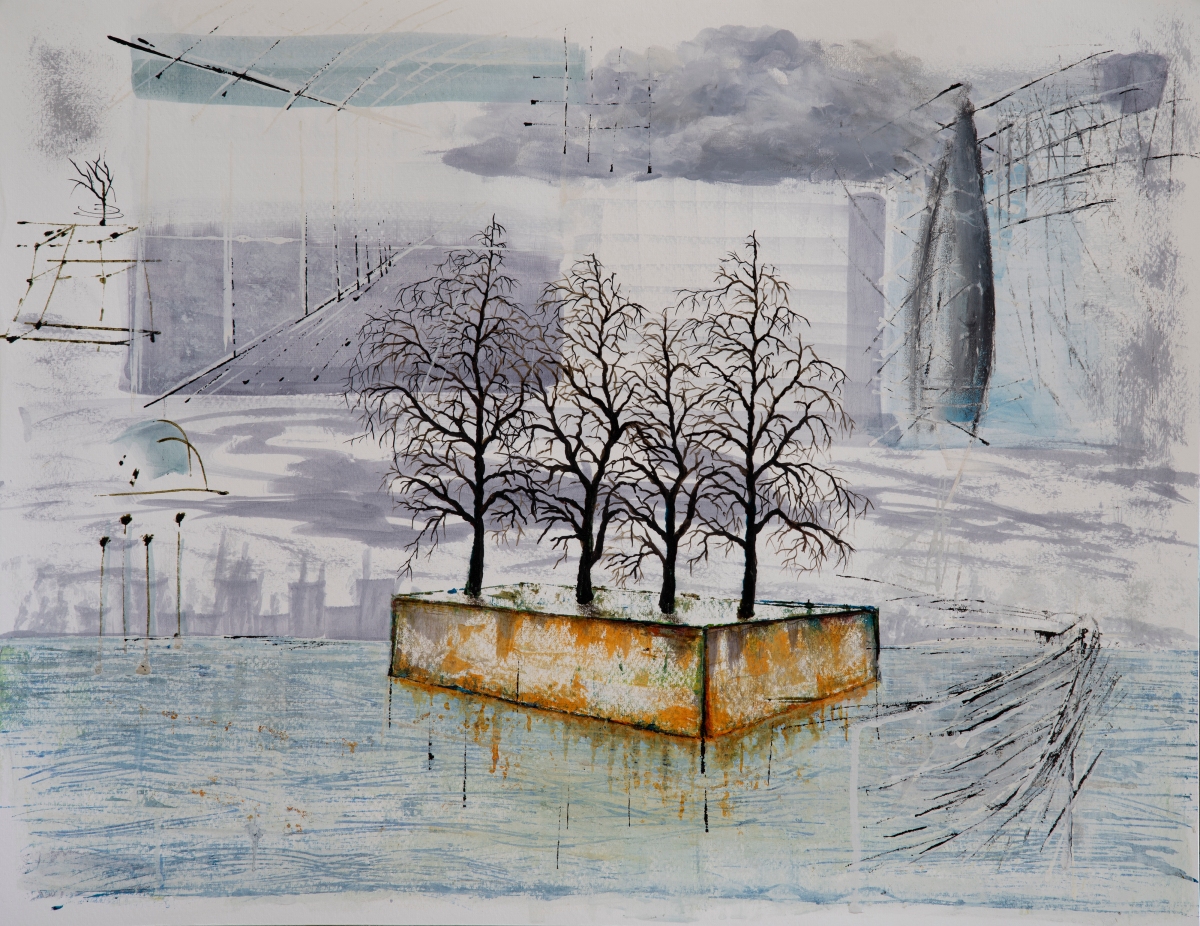







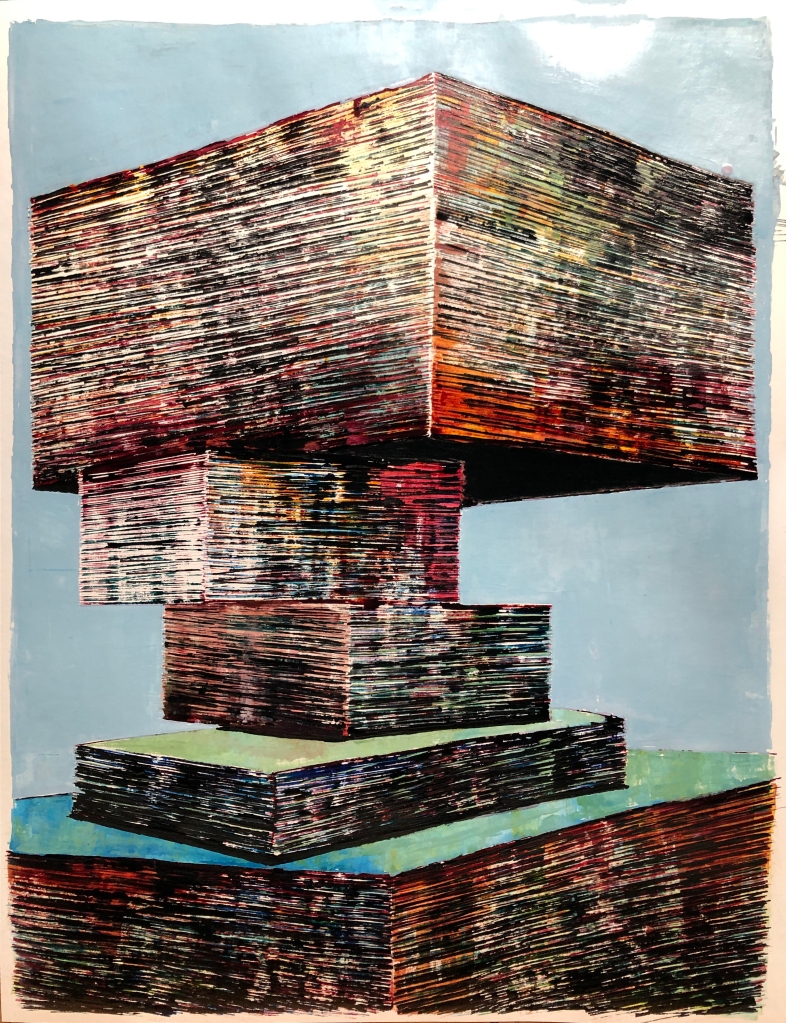
Ink on paper

































Ink on paper
CloudMapping / Justin Kamp
Time and place are not abstractions, in Yuval Yairi’s work, but rather intrinsically linked formal modes. Throughout the Israeli artist’s practice, he has persistently investigated how these two subjects operate as functions of one another: how a place lives in one’s mind not as a singular “decisive moment,” as Henri Cartier-Bresson might say, but as a conglomeration of successive views, gathered and arrayed over the course of a life. In “CloudMapping,” opening at Fabienne Levy Gallery on February 16th, Yairi continues these persistent investigations, broadening them into new material realms.
“CloudMapping” is the final part in a trilogy of shows that Yairi has developed over the past decade, all of which have captured, through means both plastic and photographic, the granular details of his Israeli homeland, its substrate of shattered bullets and cypress seeds. In “CloudMapping,” though, Yairi moves away from the camera’s direct representation. Here, instead, a realm of ink: architectonic drawings of seed pods and men, of boats suspended in schematic grids. Clouds, adrift, over a rubbed-pigment desert.
The subjects of “CloudMapping” are not the specific places Yairi conjured in previous works. They are instead concepts, rendered from the vantage of non-concrete time. In these drawings, Yairi gives form to the transience of representation, and indeed of the material world: Trees growing, harvested for lumber; towers, crumbling or not yet built; clouds, hanging then gone. Here, again, a remembrance of Cartier-Bresson. “For the world is movement, and you cannot be stationary in your attitude toward something that is moving.”
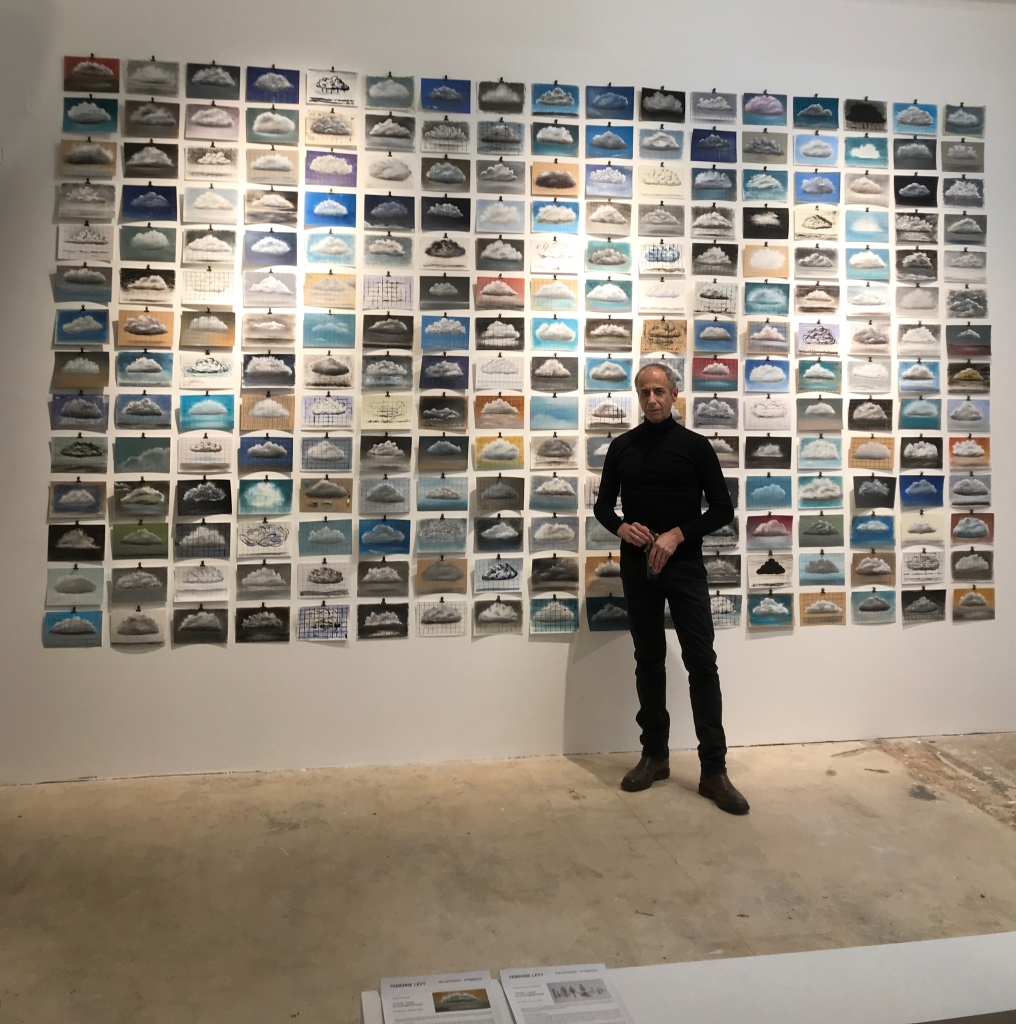

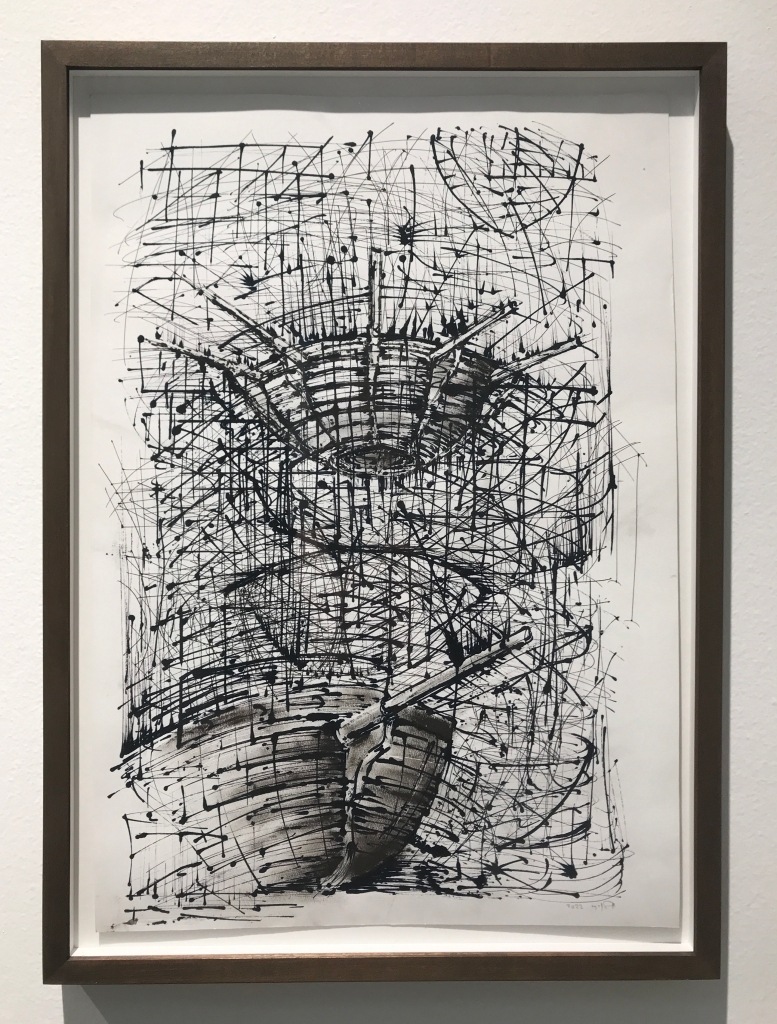

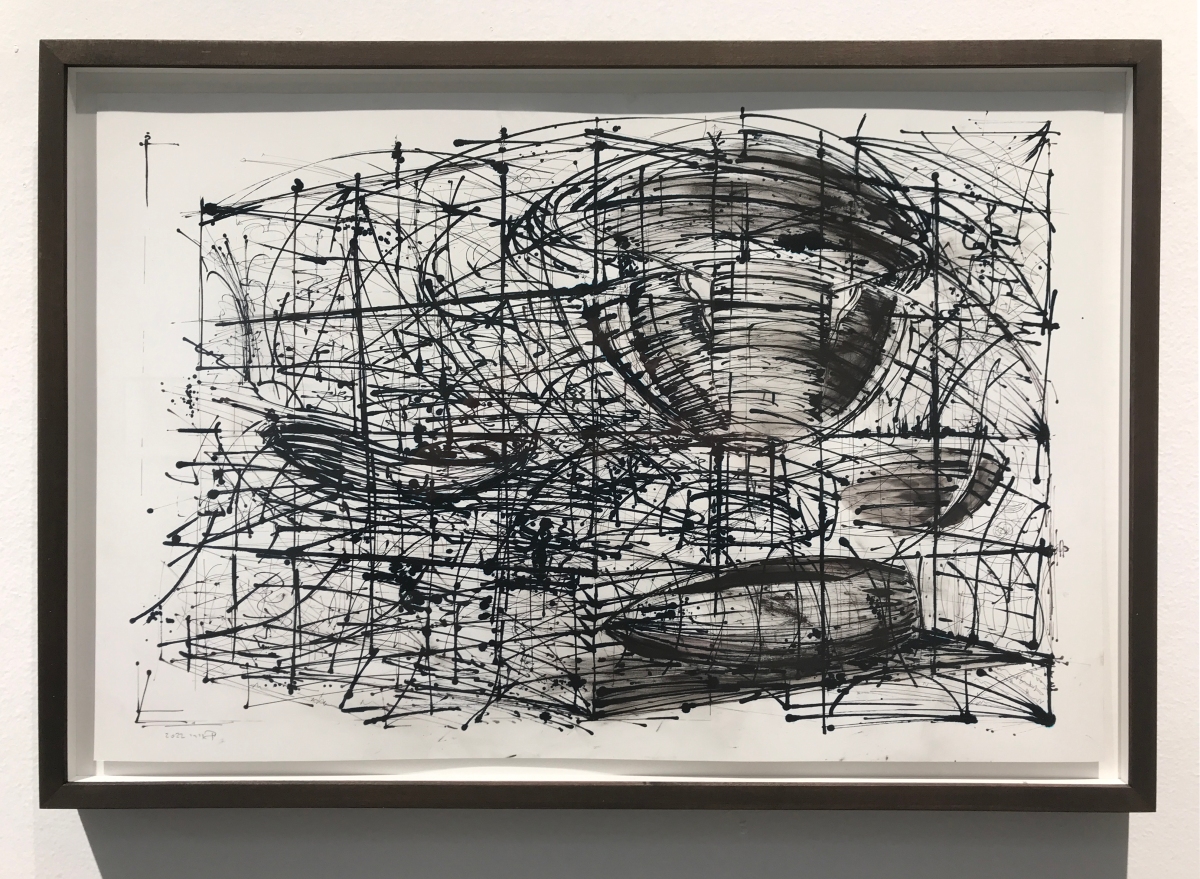





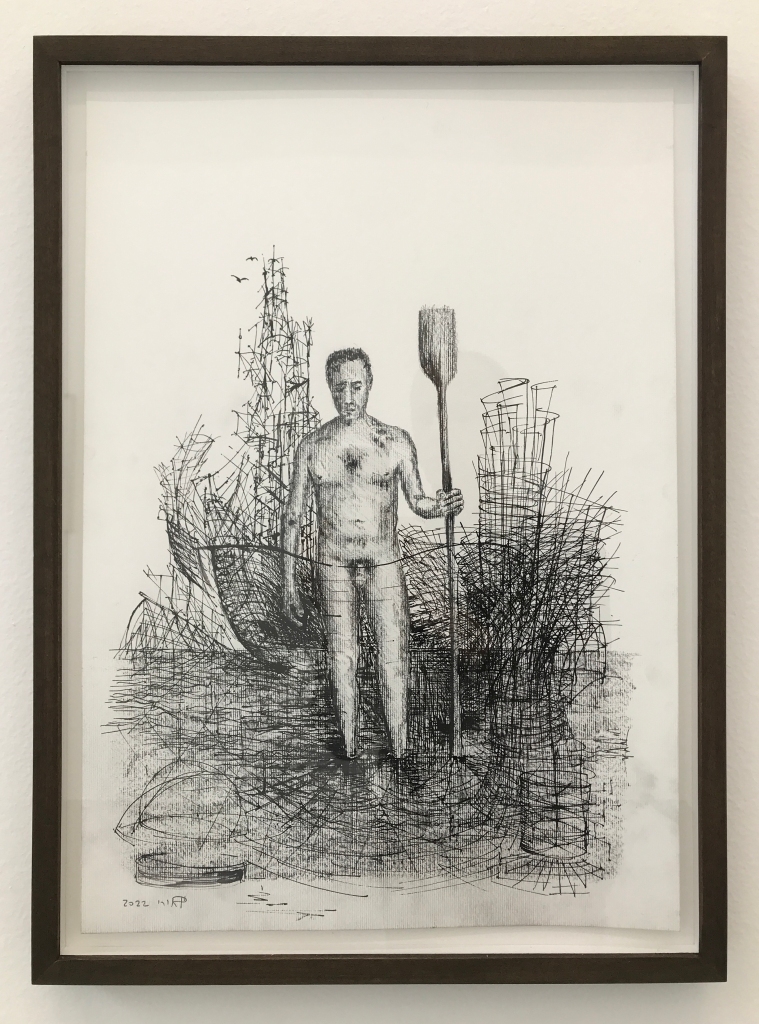


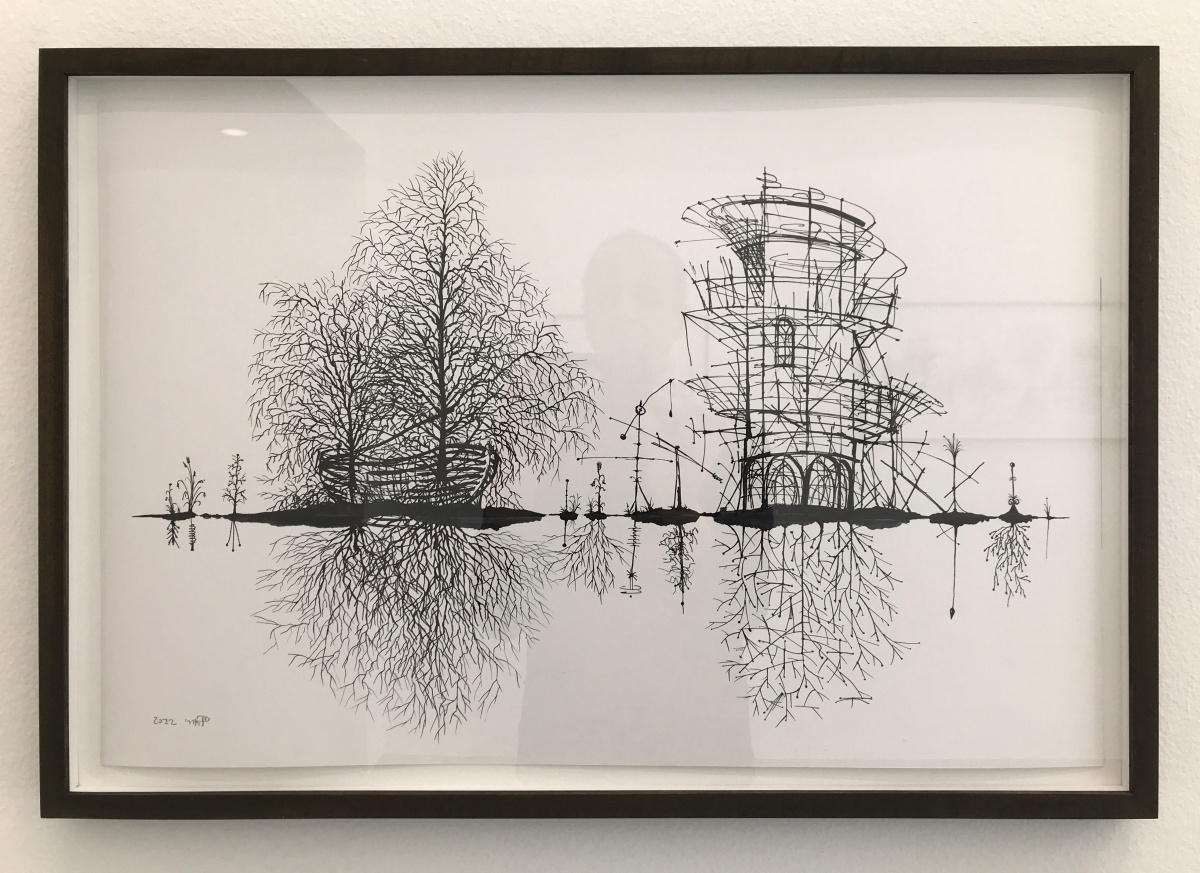

In collaboration with: Paulina Witaszczyk
THE 31ST JEWISH CULTURE FESTIVAL / KRAKOW 2022
In “Maiseh”, which is the Yiddish word for tale (מייסע), seven legends are passed on in the public space. These tales are vehicles to grapple with loss, misfortune, betrayal and broken hearts. They arm us with humor, hope, courage and love. They bring us together.
Between June 25th and July 3rd, artists from Israel, Germany and Poland tell their version of legends from Krakow – in performances, drawings, murals, sound installations, workshops, and letters. Listen to these stories as they unfold in the streets of Kazimierz
MAISEH. A series of site-specific art projects >>>
Artists: Wojtek Blecharz, Hadassa Goldvicht, Cecylia Malik, Stefanie Oberhoff, Christoph Rothmeier, Kobi Vogman, Yuval Yairi
Curators: Curatorial Collective for Public Art (Berlin): Yael Sherill, Lianne Mol, Julia Kawka; HaMiffal (Jerusalem): Meydad Eliyahu; Jewish Culture Festival (Kraków): Paweł Kowalewski
This project is co-financed by the Foundation for Polish-German Cooperation and the Goethe Institute Krakow



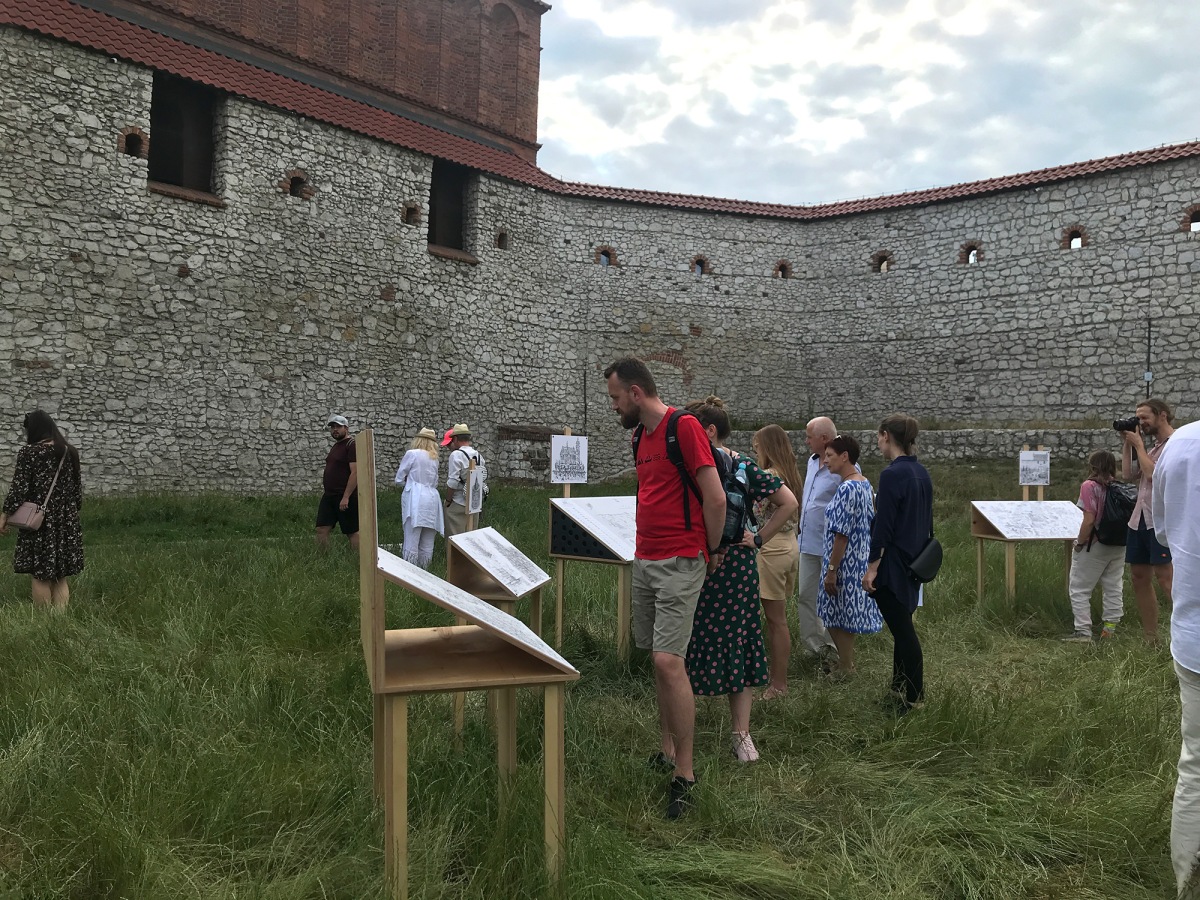

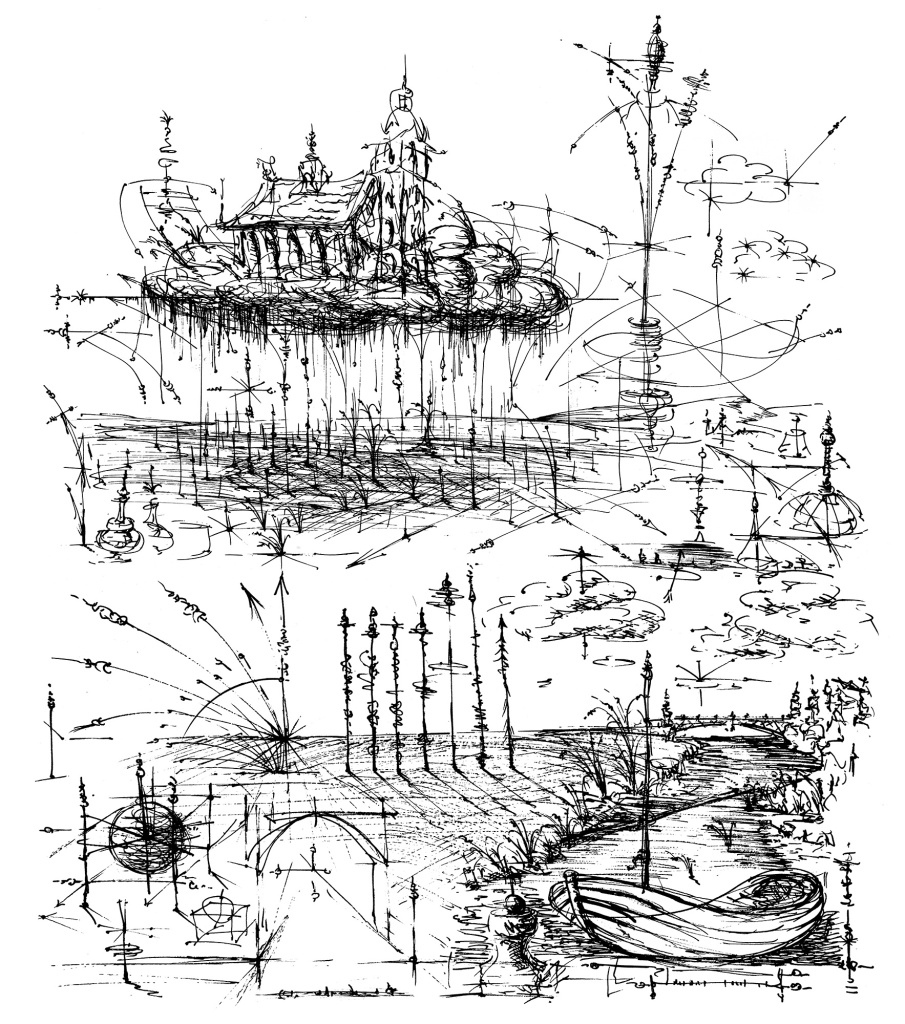

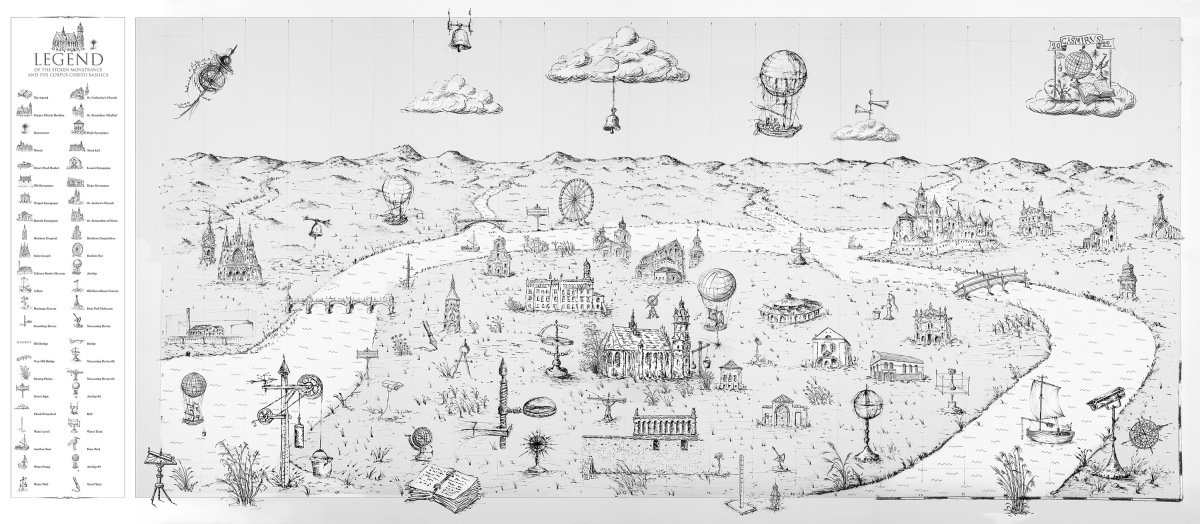



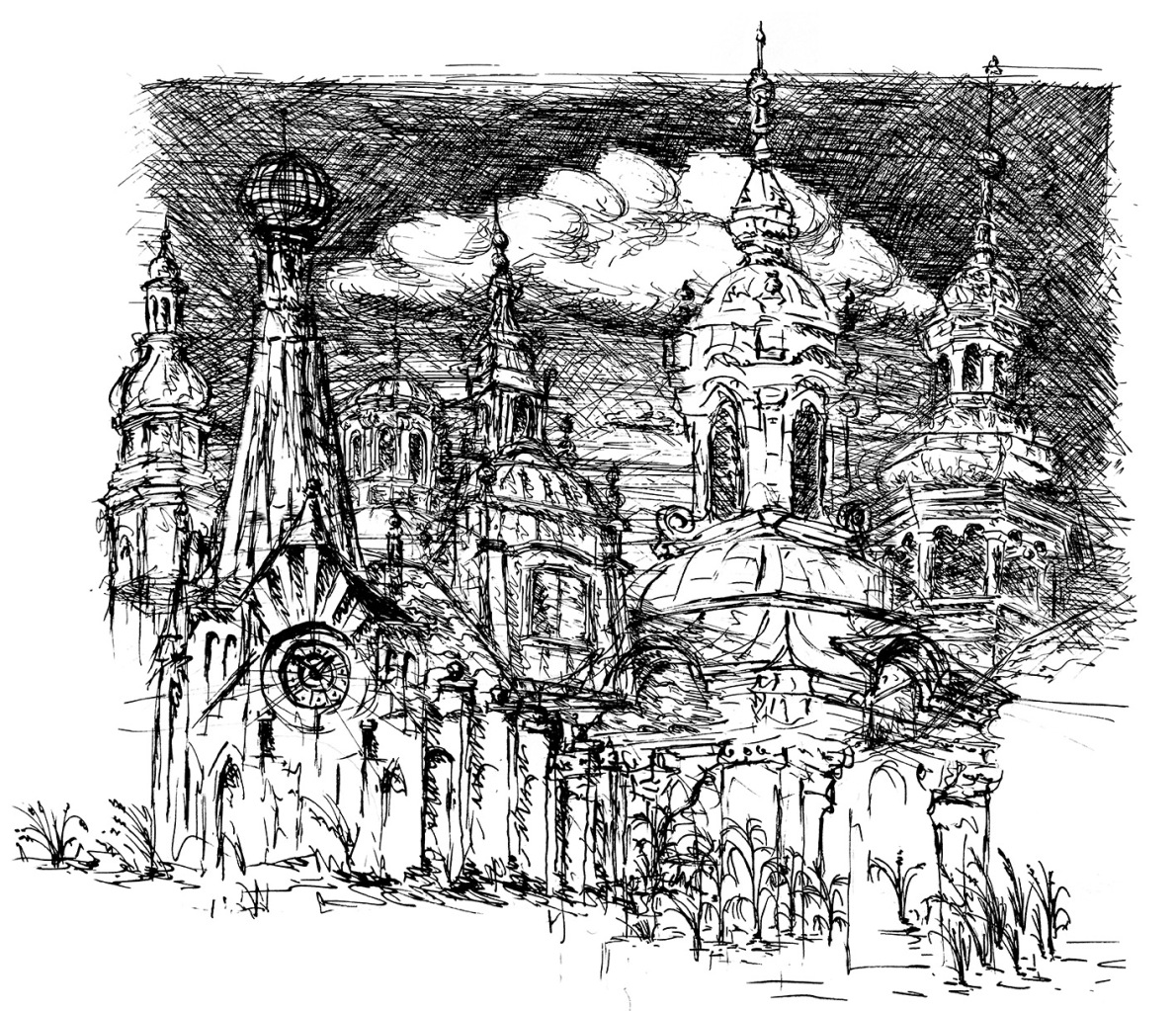


Curator: Limor Alpern Zered

The artistic and cultural discourse includes a broad discussion of womanhood and feminism – mostly concerning issues of the feminine body and the patriarchal gaze directed at it. Now – with many reports of violence against women during the coronavirus crisis – this issue has become more prominent and pressing.
This exhibition seeks to focus the viewers’ gaze on the domestic feminine space, which functions as a kind of “micro-territory.” It presents a spectrum of experiences, ranging from protection and intimacy to discomfort and subversiveness. Today we still live in a culture that delimits the experience of space according to gender. Like the woman’s body, her space is sensitive and vulnerable, defined by distinctions between inside and outside and by an organized system of acceptance and rejection, permission and prohibition.
The discussion of feminine space is related to Freud’s famous essay, “The Uncanny” (1919). This essay addresses the transformation of the familiar, intimate, and homely into a source of discomfort and strangeness that stirs fear and anxiety, precisely because of its familiar aspects. Freud, who identified the home with the maternal body, argued that the womb is nothing but the “gate to one’s old homeland […] the old, familiar feeling of homeliness, but also the sign of repression.” According to Freud, the womb is the main source of the polar opposition between the familiar and the strange, an opposition that threatens man’s identity. What was once homely and intimate becomes, for the child, mysterious and dark as he separates from the mother.
Feminist psychoanalytic discourse tends to see Freud’s essay in a critical light, since it excludes feminine experience, addressing only the world of the masculine subject. For women engaged in this discourse, processes of separation between mother and child and the consolidation of a separate sexual identity can be accompanied by feelings of compassion and respect, and not just anxiety and strangeness.
The works presented in this exhibition focus on the landscapes of the woman’s home and their physical and emotional contents – looking from the inside out and the outside in. The woman’s image is sometimes evident; at other times it is an absent presence. The works offer a profound contemplation of life itself – of spaces that suggest the ambivalence of closeness and strangeness, desire and fear, subject and object. They feature earthy yet symbolic objects, such as a bed, a sofa, windows, and various home utensils. These objects create an intimate and familiar scenery, while at the same time pushing us away, generating a tense and enigmatic atmosphere charged with different associations. The works sometimes offer a subversive reading that expresses the essence of womanhood in terms of liminal situations of instability and collapse in the most familiar places.
Participating artists: Hamutal Attar, Oded Balilty, Lilach Bar-Ami, Bracha Lichtenberg-Ettinger, Martha Rieger, Angelika Sher, Inbal Waldman Ben, Yuval Yairi
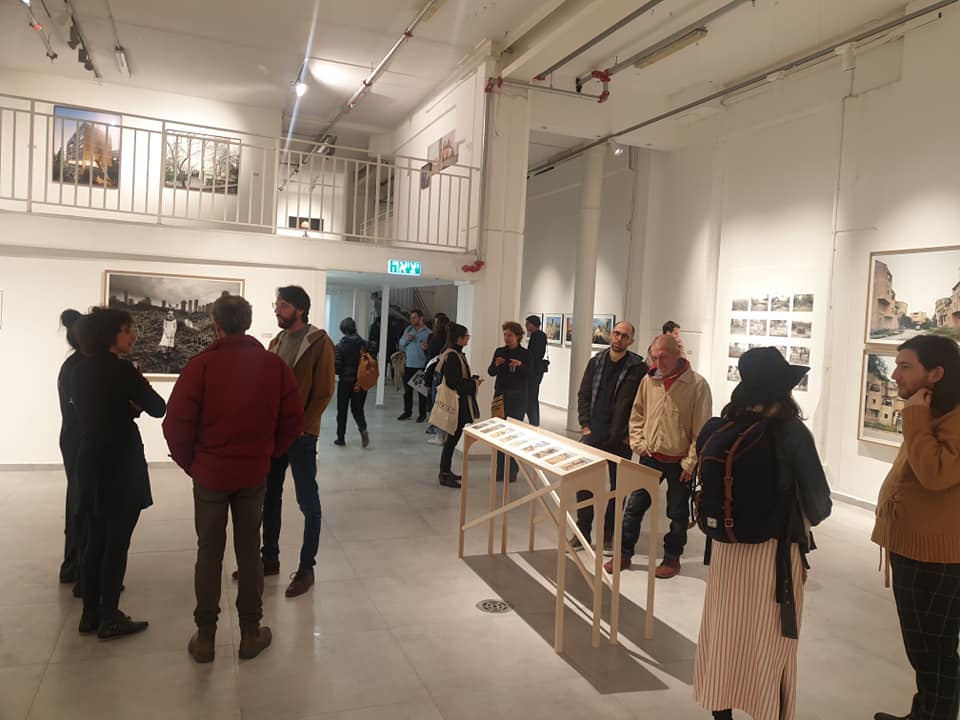
The exhibition Up and Down the Mountain is devoted to contemporary local photography, focused on the fundamental link between the artist’s own biography and his or her photographic oeuvre. The exhibition’s basic assumption is that the artist’s personal narrative exists, among other elements, in the space between reality and its representations. This is a significant element in creating the genetic code generating the artist’s subjective observation of objective reality. The artist’s unique perspective is reflected not only in the selection of the subject of the photograph, but in a series of choices accompanying each and every photographic act: choice of camera, format, lens, perspective, and the other elements comprising the final image.
The total of all of the personal gazes making up the current exhibition depict locale, a land, a path, from the lowland, and up and down the mountain. It is neither a circuit nor an entire route, but an act of marking out and coming back, characterizing many of the projects from which the works on view were selected. It is from the biography of each participating artist that the return is derived, the need to come back and make a photograph at the same place, again and again, to return and make more and more careful observations from the site. It is only in this way that the subjects of the photograph are transformed, transitioning from their existence in an average mundane location to existing in a particular, differentiated way.
The repetition leads to the subject of the photograph being severed from its time and place, whether it is landscape, place, or object. This constant return characterizes all of the photographs on view, which do not focus on the culture or history of the subject but in the way in which it activates the artist. This is photography that embodies the past and present simultaneously: it is direct, seemingly flat, yet reflects the photographer’s inner world. The works on view differ greatly from one another, yet in all of them, photography is the means of making a subjective experience come into being and delineate the exclusivity of that experience.
Curator: Etty Schwartz
Artists: David Adika, Ruth Agassi, Boaz Aharonovitch, Ron Amir, Einat Arif-Galanti, Oded Balilty, Michal Bar Or, Rea Ben David, Ariel Hacohen, Youval Hai, Gaston Zvi Ickowicz, Yaakov Israel, Ronit Porat, Eldad Rafaeli, Baruch Rafiach, Michal Rovner, Gustavo Sagorsky, Hadas Satt, Etty Schwartz, Meir Wigoder, Pavel Wolberg, Sharon Yaari, Yuval Yairi, Keren Zaltz
المعرض الحالي طلعة ونزلة الجيل مُكرّس للتصوير المحلي المعاصر، ويركّز على ماهية العلاقة بين السيرة الذاتية للمصور وعملية التصوير التي يقوم بها. الفرضية الأساسية للأعمال في المعرض هي أن بين الواقع وتمثيلاته ثمّة، ضمن أمور أخرى، قصة شخصية للمصور. وهذا عنصر مهم في تشكيل الشيفرة الوراثية التي تنمو منها تأملاته الذاتية في الواقع الموضوعي، تأملات فريدة يتم التعبير عنها ليس عبر اختيار موضوع التصوير فحسب، يل أيضًا عبر سلسلة الخيارات المرافقة لعمل التصوير: اختيار الكاميرا، الاطار، العدسة، المنظور وبقية مركبات التصوير.
مجموعة النظرات الشخصية الوافرة التي تُركّب المعرض ترسم مكانًا، بلدًا، طريقًا. من المنخفض، وطلعة الجبل والعودة. ليس مسارًا دائريًا، كاملًا، بل فعل من التأشير والتكرار، الذي يميّز العديد من المشاريع التي تم اختيار الأعمال من ضمنها. السيرة الذاتية لكل واحد وواحدة من الفنّانين والفنّانات المشاركين هي التي تولّد التكرار، حاجة العودة وتصوير الماكن نفسه مرة تلو المرة، والعودة للتأمل به أكثر وأكثر. فقط هكذا تتحول موضوعات التصوير وتنتقل من وجودها في مكانها الحالي، اليومي، إلى وجودها الفريد المميّز.
يؤدي التكرار إلى انعتاق موضوعة التصوير- المنظر الطبيعي، المكان أو الكائن – عن الزمن والحيّز المتواجد فيهما. وهذا يميّز جميع الصور المشاركة في المعرض، فهي لا تتمحور في ثقافة أو تاريخ موضوعة التصوير، بل في الطريقة التي تعمل فيها على تشغيل الفنّان أو الفنّانة. إنه تصوير يتواجد داخله الماضي والحاضر في الوقت نفسه، تصوير مباشر، كأنه مسطّح لوهلة، ومع ذلك فهو يعكس العامل الداخلي للمصور. تختلف الصور المشاركة في المعرض الواحدة عن الأخرى، ولكن فيها كلها يشكل التصوير وسيلة لتكوين تجرية شخصية وتخطيطها الحصري.
أمينة المعرض: إيتي شڤارتس
المشاركون في المعرض: روتي أچاسي, بوعاز أهرونوڤيتش, عوديد باليلطي, ريع بن داڤيد, ميخال بار أور, أريئيل هكوهن, پاڤيل ولبيرغ, مائير ويچودير, كيرن زالتس, يوڤال حاي, يوڤال يائير, شرون يعاري, يعقوب يسرائيل, غوستاڤو سچورسكي, هداس سات, داڤيد عديقا, رون عمير, عينات عريف چلانتي, رونيت پورات, غوستون تسڤي أيسكوبيتش, ميخال بار أور, إلداد رفائيلي, باروخ رفياح, إيتي شڤارتس
התערוכה במעלה ובמורד ההר מוקדשת לצילום מקומי עכשווי, ומתמקדת במהות הקשר בין הביוגרפיה של האמן ובין מעשה הצילום שלו. הנחת היסוד של העבודות בתערוכה היא שבין המציאות לייצוגים שלה נמצא, בין היתר, סיפורו האישי של הצלם. זהו מרכיב משמעותי ביצירת הקוד הגנטי שממנו צומחת ההתבוננות הסובייקטיבית שלו במציאות האובייקטיבית, התבוננות ייחודית הבאה לידי ביטוי לא רק בבחירת מושא הצילום אלא גם בסדרת הבחירות המלוות כל מעשה צילומי: בחירת המצלמה, הפורמט, העדשה, הפרספקטיבה ושאר מרכיבי הצילום.
שלל המבטים האישיים המרכיבים את התערוכה מציירים מקום, ארץ, דרך. מן השפלה, במעלה ההר ובחזרה. זהו אינו מסלול מעגלי, שלם, אלא פעולה של סימון וחזרה, המאפיינת רבים מהפרויקטים שמתוכם נבחרו העבודות. הביוגרפיה של כל אחד ואחת מהאמנים המשתתפים היא המולידה את החזרה, את הצורך לחזור ולצלם באותו המקום שוב ושוב, לחזור ולהתבונן בו עוד ועוד. רק כך מותמרים מושאי הצילום ועוברים מקיומם במקומם המצוי, היומיומי, אל קיומם הפרטיקולרי, הנבדל.
החזרתיות מובילה לניתוקו של מושא הצילום – נוף, מקום או אובייקט – מהזמן והמרחב שהוא נתון בו. היא מאפיינת את כל התצלומים המופיעים בתערוכה, הם אינם מתמקדים בתרבות או בהיסטוריה של מושא הצילום אלא באופן שבו הוא מפעיל את האמן או האמנית. זהו צילום המקיים בתוכו את העבר ואת ההווה בו בזמן, צילום ישיר, שטוח לכאורה, ויחד עם זאת משקף את עולמו הפנימי של הצלם. העבודות המוצגות בתערוכה שונות מאוד זו מזו, אך בכולן משמש הצילום אמצעי להתהוות חוויה סובייקטיבית ולרישום האקסקלוסיביות שלה.
אוצרת: אתי שוורץ
אמנים: רותי אגסי, בעז אהרונוביץ׳, עודד בלילטי, רע בן דוד, מיכל בראור, אריאל הכהן, פבל וולברג, מאיר ויגודר, קרן זלץ, יובל חי, יובל יאירי, שרון יערי, יעקב ישראל, גוסטבו סגורסקי, הדס סט, דוד עדיקא, רון עמיר, עינת עריף גלנטי, רונית פורת, גסטון צבי איזקוביץ׳, מיכל רובנר, אלדד רפאלי, ברוך רפיח, אתי שוורץ